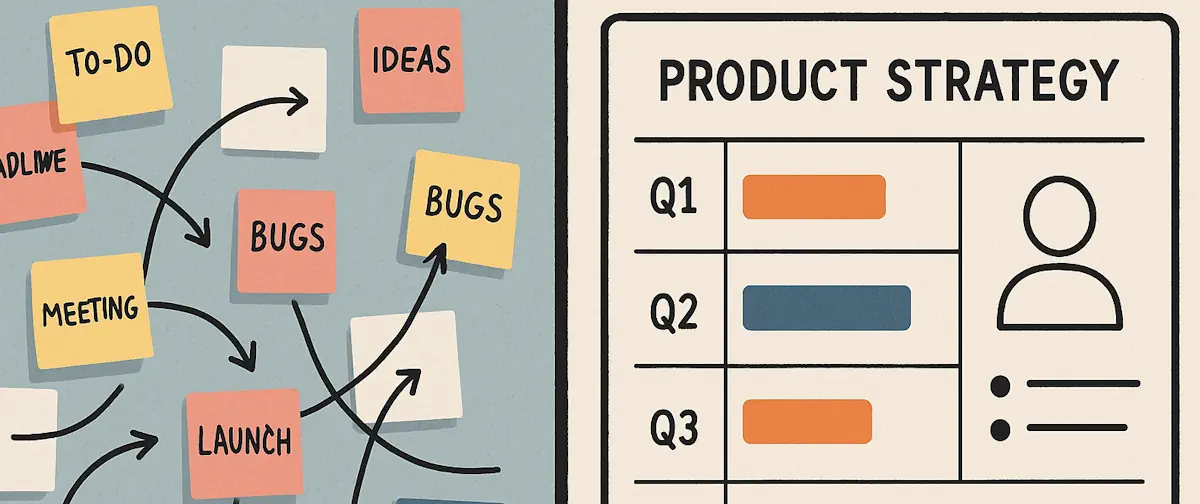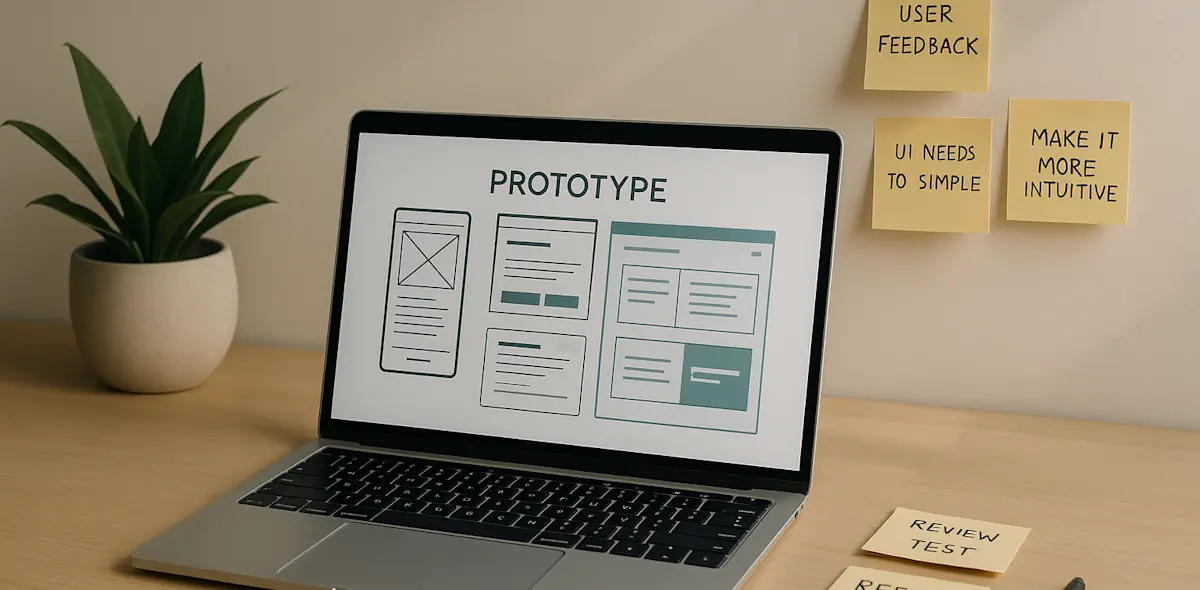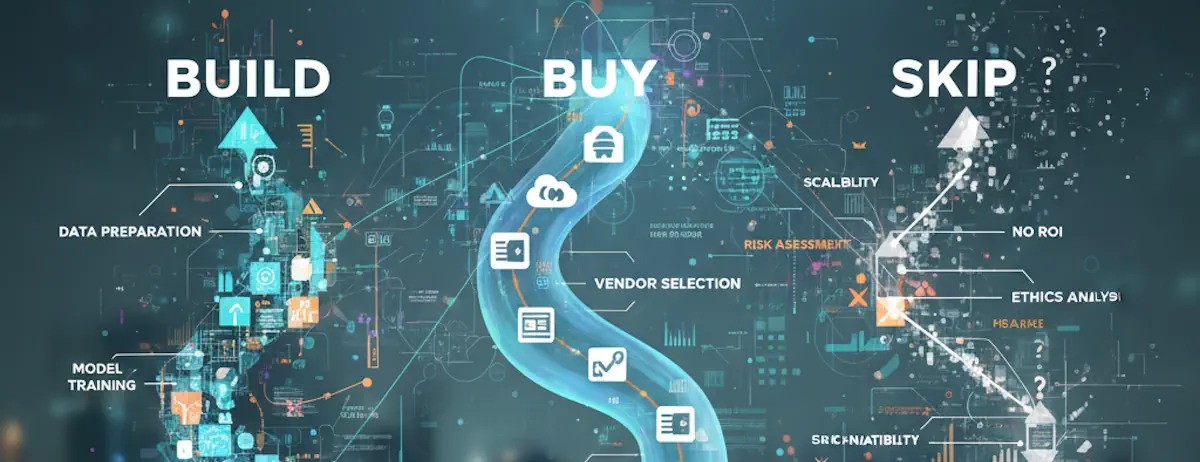When to Hire Your First PM
Most organizations hire PMs too early or too late

I’ve been the technical founder who thought hiring a PM would solve our roadmap chaos. I’ve also been the leader who hires PMs and watches organizations struggle to work with them. Most companies get this hire spectacularly wrong—either too early when they need execution focus, or too late when they’re drowning in competing priorities.
The real issue isn’t timing. It’s that most organizations don’t realize they’re already doing product management work. They’re just approaching it reactively instead of strategically.
The Reactive Product Management Trap
Whether you’re a startup founder or leading a team at an established company, you’ve been making product decisions since day one. Which features to build first. How to prioritize bug fixes versus new functionality. Whether that customer request is worth the engineering effort. This is product management work—you just didn’t call it that.
But here’s the trap: most organizations approach these decisions through an outputs lens rather than an outcomes lens. They think in terms of “ship this feature” instead of “solve this customer problem.” They optimize for what they can build quickly rather than what delivers the most value.
As I explored in my previous post on project vs product thinking, this distinction fundamentally shapes how organizations create value. Companies stuck in project mode focus on delivery metrics while product-oriented organizations focus on customer outcomes.
The Organizational Readiness Assessment
The decision to hire your first PM isn’t about company size or funding stage. The average product manager stays at their job for 1-2 years, but this tenure varies significantly based on organizational readiness. Companies that hire PMs before they’re culturally ready for product thinking see even shorter tenures.
The PM Evolution Path
Feature Factory
Roadmaps
Product Thinking
Signal 1: You’re making the same customer-discovery mistakes repeatedly.
Your team builds features customers requested, but adoption disappointing. You fix the “obvious” problems, but customer satisfaction doesn’t improve. You’re solving symptoms instead of root causes because no one has time to dig deeper into the why behind customer feedback.
Signal 2: Your engineering team is asking business questions you can’t answer confidently.
“Should we optimize for performance or add this integration?” “Is this edge case worth two weeks of development?” “Why are we building this instead of that?” When your engineers need business context to make technical decisions, and leadership is guessing at the answers, you need product thinking.
Signal 3: You’re spending more time on internal alignment than customer problems.
Sales wants features for their biggest prospect. Support is drowning in tickets from a poorly designed workflow. Engineering has strong opinions about technical debt. Leadership becomes a referee instead of a customer advocate because no one owns the “why” behind product decisions.
Organizational Readiness Spectrum
Still proving core value proposition
Changing strategy monthly
No clear decision-making authority
Clear value prop, unclear prioritization
Multiple stakeholder interests emerging
Engineering asking "why" questions
Proven value, scaling challenges
Complex stakeholder alignment needs
Customer discovery taking all leadership time
Competitors advancing while you debate
Technical debt from poor prioritization
Teams working on conflicting goals
What to Look for in Your First PM
Your first PM isn’t a project coordinator who organizes requirements. As Marty Cagan defines it, they’re accountable for ensuring solutions are both valuable (customers choose to buy or use) and viable (works within business constraints). They own the “what” and “why” while partnering with engineering on the “how.”
What PMs Actually Own vs. Partner On
Features & Strategy
Customer Problems
Engineering Partnership
Look for customer empathy over process skills. They should ask about customer pain points before asking about your roadmap. They should want to understand your market positioning before organizing your backlog. They should be curious about why customers churn, not just how to ship features faster.
Prioritize business judgment over technical depth. They don’t need to write detailed user stories about API specifications or database schemas. As Marty Cagan outlines, successful PMs need deep knowledge of customers, data, business constraints, and industry context—but they’re experts at communicating experience, not implementing code.
Find someone who thrives in ambiguity. Your first PM will define processes, not inherit them. They’ll create clarity from chaos, not follow established playbooks. They need to be comfortable with imperfect information and evolving requirements.
Navigating the Organizational Transformation
The most common failure pattern isn’t poor hiring—it’s organizational resistance to the cultural shift that effective product management requires.
Address the political reality upfront. Your first PM will face resistance from established power structures. Sales will push for “their” features. Engineering will question business priorities. Finance will demand ROI justification for every decision. Prepare stakeholders for this shift by clearly defining decision-making authority before the PM starts.
Create structured boundaries, not unlimited authority. Define specific domains where the PM has decision-making power and clear escalation paths for conflicts. They should own feature prioritization within budget constraints, customer research methodology, and product metrics—but understand that legal, compliance, and existing contractual obligations create real boundaries.
Build customer access systematically. Don’t just tell them to “talk to customers.” Create formal pathways: monthly customer advisory sessions, quarterly user research budgets, direct access to support ticket data, and regular sales call shadowing. Document these as standard operating procedures.
Plan for the 90-day integration challenge. Most PM failures happen in the first quarter when cultural antibodies kick in. Schedule weekly check-ins, monthly stakeholder feedback sessions, and clear success metrics for their first 90 days. Focus on small wins that demonstrate value before tackling bigger organizational changes.
The right PM hire transforms how your organization thinks about product development. They shift focus from reactive feature delivery to proactive customer problem-solving. But this transformation requires organizational commitment beyond the hiring decision itself.
When you’re ready to move from asking “Can we build this?” to “Should we build this?"—that’s when you’re ready for your first PM.








